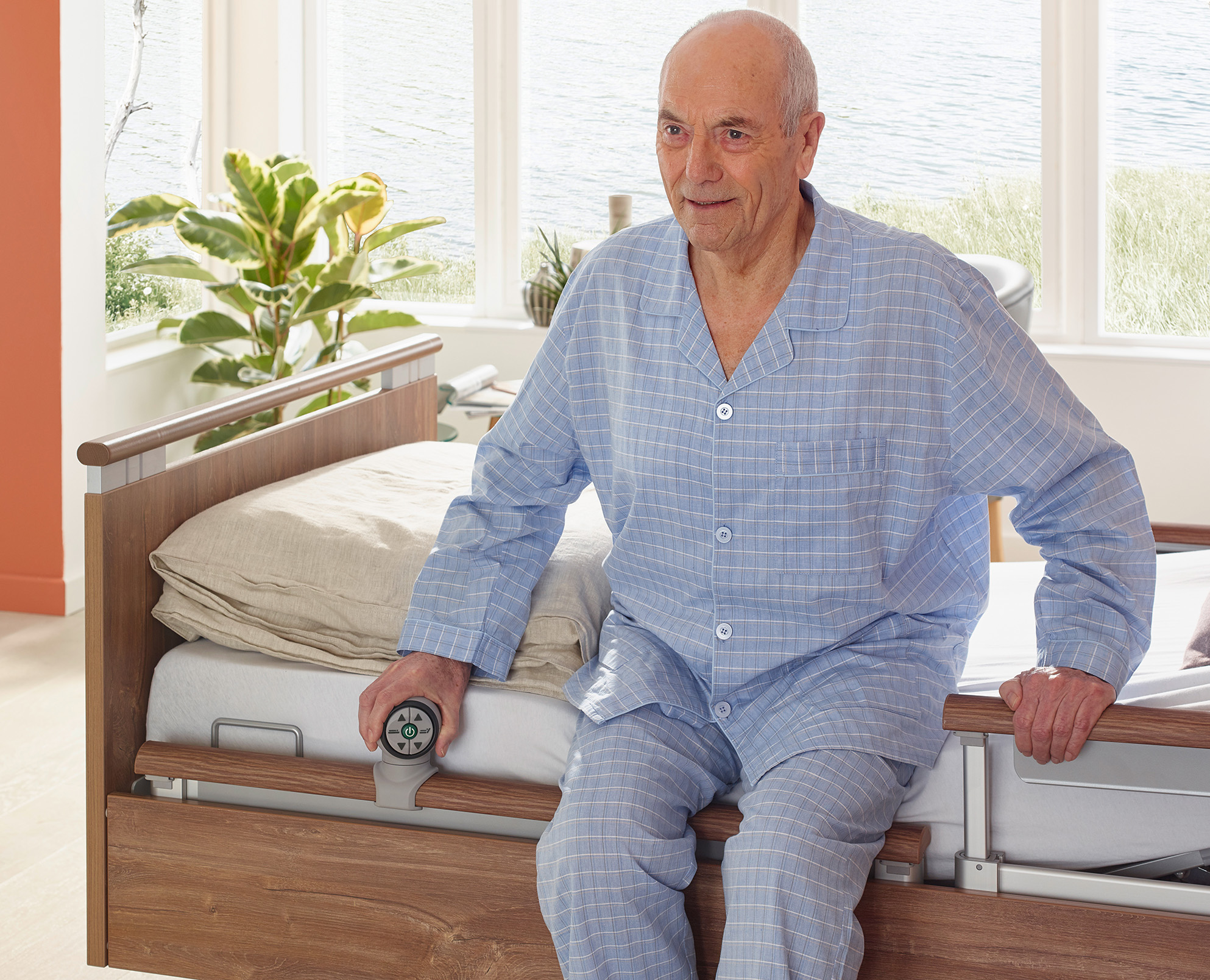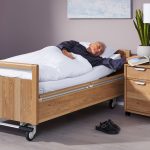Those who maintain muscle strength stay healthy longer and lie in bed less
Whoever is bedridden is dependent. The nightmare of many seniors. Too little exercise and lack of muscle power are also the causes of insecurity and falls. A vicious circle of even more fear and even less mobility begins. What helps are mobilisation exercises in bed and outside.
Even if it seems to be easier to care for a senior citizen who is in bed and does not cause any „problems“. This situation is neither satisfactory for the elderly person nor for nursing staff or relatives. And it is contrary to the honour of nursing staff and the expert standard „Preservation and promotion of mobility in nursing care“ to leave people and their mobility to their own devices. Rather, maintaining and improving mobility are central objectives of professional care. Measures that promote and maintain mobility help to maintain an independent way of life. They also break the vicious circle of immobility, falls and dependence. These measures mobilise the well-groomed in the right way:
- Don’t let the elderly person sit in a chair or armchair for hours. This is no healthier for the musculoskeletal system than simply lying down.
- Carry out targeted movement exercises together. You should mobilise and build up strength. For example, specific exercises to get up and sit down.
- Mobilization of individual joints, for example, through supported exercises in bed. Bend and stretch your knees, rotate your feet…
- Sitting, standing and walking exercises – Depending on the abilities of the person being groomed
- Grip exercises: Stretching, spreading and clawing the fingers to keep them mobile
- Even standing next to the bed for a short time can improve the blood circulation.
- Breathing exercises (with open window) prevent pneumonia and supply the body with fresh oxygen.
- Those who cannot practice on their own need the help of a nurse or physiotherapist (passive mobilisation).
- Positioning: Always place bedridden patients in such a way that the largest possible body surface is supported. This way the pressure can be distributed evenly.
- Those who cannot get up at all should be regularly repositioned, massaged or washed at alternating temperatures.
- No exercises should be carried out immediately after a meal or in case of fever.
- If blood pressure and pulse rise sharply during exercise, the exercise should be stopped.
The aim is to enable the affected person to stand up again by himself, for example to go to the toilet. Mobilization also serves to prevent secondary diseases, for example decubitus, stiff joints, depression or thromboses.


